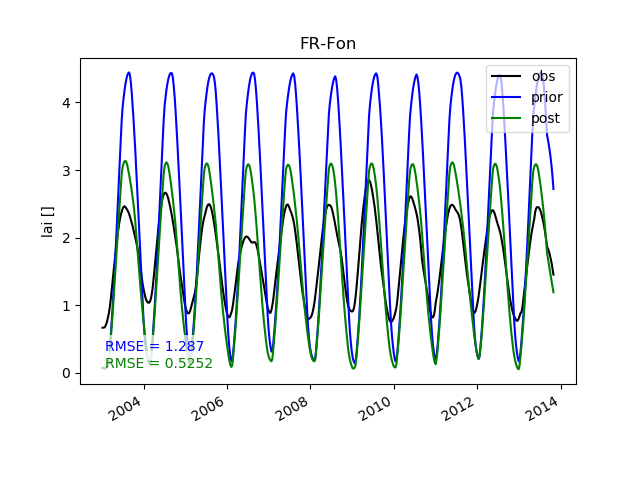The Laboratoire des Sciences du Climat et de l’Environnement (LSCE) develops the ORCHIDEE global land-surface model. Observations from the MULTIPLY Platform are compared to the ORCHIDEE model and used to help improve climate change predictions.
Nina Raoult, post-doc researcher at LSCE, explains the ORCHIDEE model and the work that needs to be done, in more detail.
The ORCHIDEE land-surface model is developed at LSCE. This computer model simulates different terrestrial processes, such as plant photosynthesis and soil evaporation. The model is made up of different mathematical equations based on our physical understanding. However, since the world is very complex, it is impossible to accurately simulate every process. In addition, processes can occur at different scales, for example, modelling photosynthesis at the leaf-level is different to modelling the photosynthesis of a whole forest. Some processes may be missing from the model, or overly simplified. As such, the mathematical equations of the model may need to be changed, or new ones added. By comparing the model simulations to observations, we try to the change the equations so that the model reproduces what is observed. If the model is able to recreate current observations, it gives the model credibility for future climate simulations.
So, what options do you have to improve the model?
One of the part of the model we can change are the so called parameters. These can take a physical form, for instance the maximum leaf area per m2 called LAImax or temperature threshold for plant senescence, known as Tsense. Others are empirical factors. At LSCE, a data assimilation framework has been developed, called ORCHIDAS. This takes the list of parameters we want to improve and process information, such as observations, as input. The framework then outputs the best possible values for these parameters such that the model is as close as possible (by a given metric) to the observations.
Could you show an example?

The plot shows the ORCHIDAS framework in action. The leaf area index (LAI) is one of the quantities modelled by ORCHIDEE. Running ORCHIDEE at a site in France (FR-Fon), the blue curve shows the simulated values of LAI. This model run is called the prior. Using the MULTIPLY platform, we are able to retrieve values of LAI. These are shown in black. These values are much lower than the ones currently simulated in the ORCHIDEE. Using ORCHIDAS, we can find a new set of parameters in use in ORCHIDEE which will then simulate the green line instead. This run is called posterior. These simulated values are more like the MULTIPLY values of LAI than the prior run, where the RMSE is used as a metric of similarity. The magnitude of the simulated peaks are reduced but the troughs remain unchanged. This is because FR_Fon is a deciduous forest. In the ORCHIDEE, deciduous forests are modelled to lose all their leaves in winter, hence LAI is going to zero. However, the MULTIPLY retrievals suggest that there are some leaves left in the winter months, most likely due to grasses in under canopy. This suggests that a fraction of grasses needs to be included when running this forest site in ORCHIDEE.
The table shows the parameters used in this experiment. The min and max values refer to the range the parameters were allowed to change in. The prior column contains the initial values and the post column contains the improved values.

So, given all this, what is the added value of MULTIPLY for your work?
The MULTIPLY framework combines a number of satellite retrievals and is able to provide observations in a more harmonized way. The MULTIPLY Platform also provides uncertainties with the observations. This helps to know if an observation is accurate or not. By working with the MULTIPLY Platform, we can help show how important this product can be in improving models that are used to predict climate change. Since the critical situation concerning climate change, valid models are important. Stakeholders use these models to create reports, for example the IPCC reports, on which policy makers base their decision.
